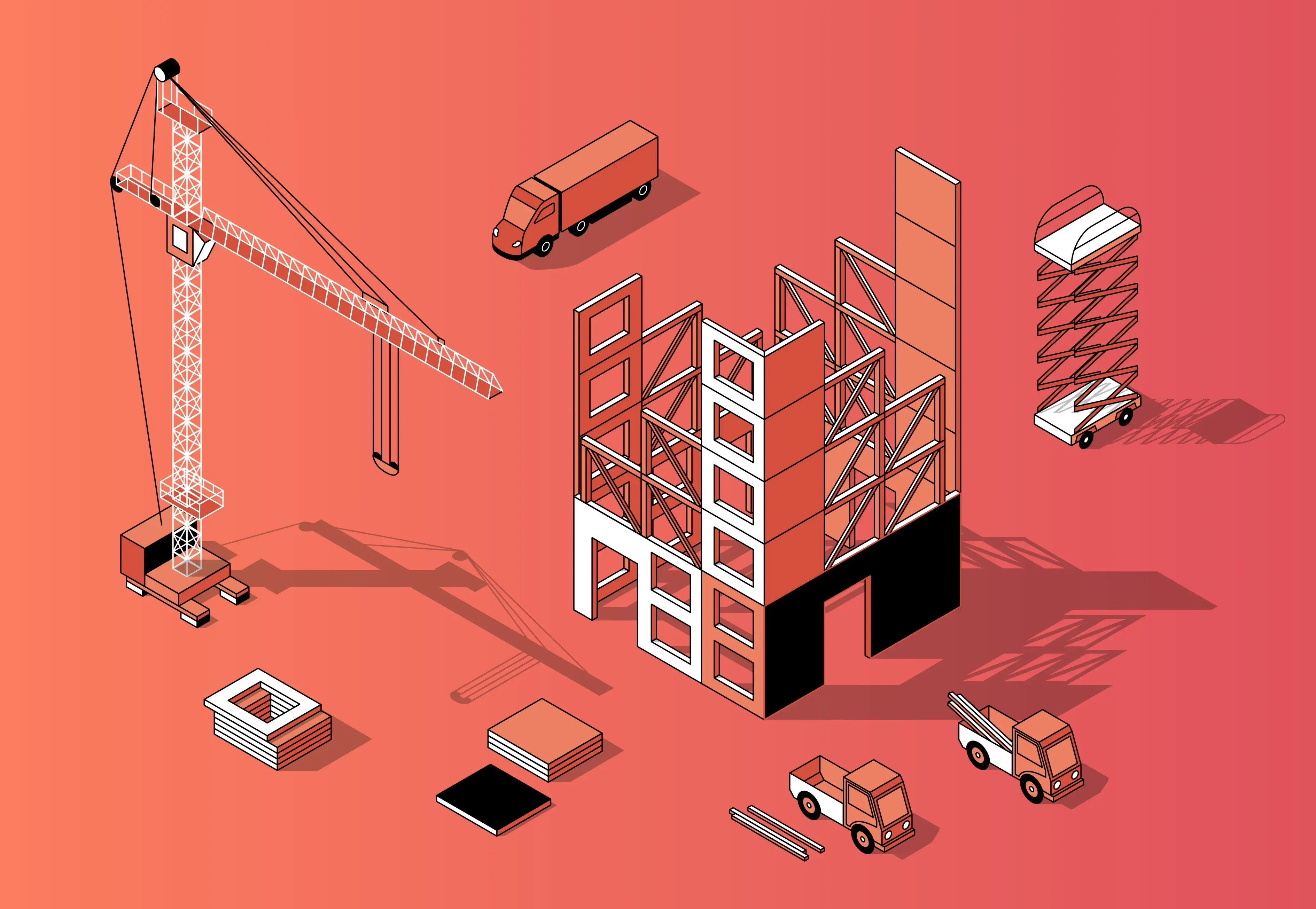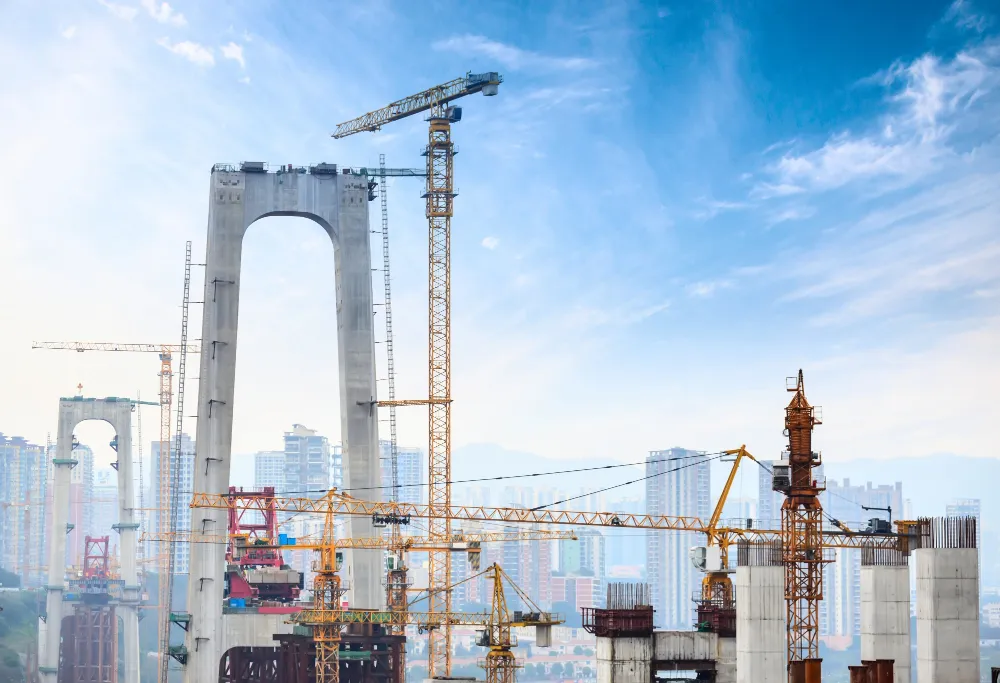The construction world is shifting faster than ever, and 2025 is proving to be a turning point. Companies are wrestling with labor shortages while embracing robots, dealing with material cost swings while building smarter, and trying to keep pace with technology that's changing monthly. If you're in the construction business, keeping up isn't just nice to have it's survival.
But here's the thing about all these trends they mean nothing if you can't find the right people to implement them. The biggest challenge facing construction companies isn't choosing between AI platforms or sustainable materials. It's finding skilled workers who can operate new technologies, adapt to changing processes, and deliver quality work on tight deadlines.
That's where workforce solutions become critical. Companies like FlexCrew USA are helping construction businesses bridge the gap between industry demands and available talent. Whether you need temporary workers for peak seasons, specialized technicians for new equipment, or project managers who understand both traditional construction and emerging technologies, having access to the right workforce platform can make the difference between capitalizing on 2025's opportunities or falling behind.
Now let's dive into what's actually changing on construction sites and how smart companies are adapting.
The Tech Revolution Finally Hits Construction
Construction has always been the industry that adopts technology last. While other sectors were going digital, construction stuck with paper plans and manual processes. That's changing fast.
AI is becoming the project manager's best friend. Smart software now predicts project delays before they happen, optimizes resource allocation automatically, and processes invoices without human intervention. One contractor mentioned their AI system caught a scheduling conflict three weeks ahead of time, saving them $50,000 in rush charges.
Key AI applications transforming construction include:
• Predictive analytics for identifying potential project delays
• Automated design optimization based on performance requirements
• Smart construction management with real-time progress tracking
• Invoice processing and matching without human intervention

Key AI applications transforming construction include:
• Predictive analytics for identifying potential project delays
• Automated design optimization based on performance requirements
• Smart construction management with real-time progress tracking
• Invoice processing and matching without
Labor Challenges Are Getting Creative Solutions
The numbers tell a stark story. The industry needs about 500,000 new workers just to balance supply and demand. With one in five construction workers over 55 and nearing retirement, the situation is getting urgent.
Targeting the Next Generation of Workers
Companies are targeting Gen Z differently. Instead of focusing only on traditional trade skills, smart contractors are highlighting the tech aspects of modern construction. They're showing young people how construction now involves operating drones, managing AI systems, and working with advanced building materials.
Strategies for attracting younger workers:
• Emphasize technology integration in construction roles
• Highlight drone operation and AI system management opportunities
• Showcase advanced building materials and smart construction methods
• Offer competitive salaries (19% above economy average)
• Provide clear career progression paths in emerging technologies
Modernizing Apprenticeship Programs
Apprenticeship programs are getting a makeover. The most successful programs now combine hands-on training with digital skills. One company reported a 40% increase in applications after restructuring their program to include BIM software training and project management technology.
Modern apprenticeships focus on hybrid skills that combine traditional craftsmanship with digital literacy. Programs now include training on construction management software, 3D modeling, and data analysis alongside traditional building techniques.
Competitive Compensation and Retention Strategies
The pay is getting better too. Construction workers now earn about 19% more than the average worker in the economy. Companies are holding onto their existing workforce because they expect growth to pick up soon, even though hiring has slowed down.
The smartest construction companies are also partnering with specialized workforce platforms to access talent quickly when opportunities arise. Instead of struggling with traditional hiring processes that take months, they're using services like FlexCrew USA to connect with pre-screened, qualified workers who can start immediately. This flexibility becomes crucial when landing unexpected projects or scaling up for busy seasons.
Sustainability Becomes Standard Practice
Green building isn't trendy anymore—it's baseline. Clients expect it, regulations require it, and economics support it. The green building market is projected to hit $851 billion by 2028, driven by both environmental concerns and real cost savings.
Advanced Materials Lead the Green Revolution
Materials are getting smarter and greener. Advanced building materials like 3D-printed concrete and basalt fiber are replacing traditional options. These aren't just better for the environment—they often perform better and last longer.
Next-generation sustainable materials include:
• 3D-printed concrete for custom architectural elements
• Basalt fiber composites replacing traditional steel reinforcement
• Recycled and upcycled building components
• Bio-based insulation materials with superior performance
• Self-healing concrete that repairs minor cracks automatically
Modular Construction Gains Mainstream Adoption
Modular and prefabricated construction is booming. The modular constructionmarket is expected to reach nearly $110 billion by 2025. The appeal is obvious: faster build times, less waste, lower labor costs, and weather-independent construction. About 60-90% of modular construction happens in climate-controlled factories.

Benefits of modular construction:
• 30-50% faster project completion times
• Reduced material waste through precise factory manufacturing
• Lower labor costs due to streamlined assembly processes
• Weather-independent construction schedules
• Enhanced quality control in factory environments
• Easier compliance with building codes and standards
Energy Efficiency Becomes Standard
Energy efficiency has moved beyond basic insulation. Smart building systems, integrated renewable energy, and advanced HVAC systems are becoming standard. The infrastructure investment act is pushing this trend even faster with generous incentives for energy-efficient construction.
Buildings are now designed as integrated systems where every component works together to minimize energy consumption. Smart sensors monitor and adjust lighting, heating, and cooling automatically, while solar panels and battery storage systems reduce dependence on the grid.
Economic Pressures Shape Every Decision
Construction spending has been volatile, but the outlook for late 2025 and 2026 is cautiously optimistic. Interest rates are expected to drop gradually, which should boost demand for both residential and commercial projects.
Government Investment Drives Growth
Government spending is keeping the lights on. Public sector construction bids are up 3.4% while private sector bids dropped 3.8%. Infrastructure projects, military construction, and data centers are the bright spots driving activity.
The Infrastructure Investment and Jobs Act continues to fuel construction activity, with billions allocated for roads, bridges, broadband expansion, and green energy projects. This government backing provides stability during uncertain economic times.
Data Centers Create Unexpected Opportunities
Data centers are the unexpected construction gold rush. Planning activity for data centers jumped 23% year-over-year and now accounts for a quarter of all commercial planning. The AI boom and cloud computing demand are creating massive construction opportunities.
These facilities require specialized construction expertise, including advanced electrical systems, sophisticated cooling infrastructure, and strict security requirements. Companies that can handle data center construction are finding themselves with full project pipelines.
Material Cost Management Becomes Critical
Material costs stabilized in 2024 after years of volatility, but experts warn that new tariffs and supply chain disruptions could reignite cost pressures in 2025. Smart contractors are diversifying suppliers, sourcing locally when possible, and exploring alternative materials.
Cost management strategies for 2025:
• Diversify supplier networks to reduce dependency risks
• Increase local sourcing to minimize transportation costs
• Explore alternative materials that offer cost and performance benefits
• Implement just-in-time inventory management
• Negotiate long-term contracts to lock in favorable pricing
• Invest in bulk purchasing for commonly used materials
Regional Differences Tell Different Stories
Not every market is experiencing the same trends. While construction starts in Alberta dropped nearly 50%, the Atlantic provinces saw a 170% jump. The Northeast is struggling with project cancellations, while the West is benefiting from data center demand.
Urban vs Rural Construction Needs
Urban versus rural construction needs are diverging. Urban projects focus on density, sustainability, and smart building integration. Rural projects prioritize cost efficiency and traditional materials but with modern building techniques.
Cities are demanding LEED-certified buildings, integrated transportation systems, and mixed-use developments that maximize space efficiency. Rural areas are seeing growth in agricultural facilities, renewable energy infrastructure, and residential communities designed for remote workers.
Climate-Driven Design Requirements
Climate considerations are becoming location-specific requirements. Areas prone to extreme weather are demanding more resilient building materials and designs, while regions with mild climates are emphasizing energy efficiency and smart building features.
Hurricane-prone areas now require enhanced wind resistance and flood-proof foundations. Fire-prone regions demand fire-resistant materials and defensible space design. Cold climates are adopting advanced insulation and heating systems that perform efficiently in extreme temperatures.
The Software Revolution in Construction
Construction management software adoption has accelerated dramatically. Teams are moving away from spreadsheets and email chains toward integrated platforms that handle everything from project scheduling to financial management.
Building Information Modeling Goes Universal
Building Information Modeling (BIM) is becoming universal. Common data environments allow entire project teams to work from the same updated information in real-time. This reduces errors, improves coordination, and speeds up decision-making.
BIM technology now integrates with IoT sensors, drones, and mobile devices to create a comprehensive digital representation of construction projects. Teams can visualize progress, identify conflicts, and optimize workflows before problems occur on-site.
Subscription Models Transform Software Access
Subscription-based software models are taking over. Instead of buying expensive software licenses upfront, construction companies are adopting flexible subscription models that scale with their needs and provide automatic updates.
This shift makes advanced construction technology accessible to smaller companies that couldn't afford large upfront investments. Monthly subscriptions include ongoing support, regular updates, and cloud-based collaboration features.
Integration Becomes Key to Success
The most successful companies are choosing software that integrates well with other tools rather than trying to find one solution that does everything. The best setups connect project management, accounting, scheduling, and communication tools seamlessly.
Essential construction software categories for 2025:
• Project management platforms with real-time collaboration
• Building Information Modeling (BIM) software for design coordination
• Financial management tools with construction-specific features
• Mobile apps for field workers and site documentation
• Cloud-based data storage and backup solutions
• Integration platforms that connect different software systems
Frequently Asked Questions
Q. What are the biggest construction trends for 2025?
A. The top trends include AI integration for project management, robotics automation, sustainable building practices, modular construction growth, and addressing the critical labor shortage through technology and better training programs.
Q. How is AI being used in construction projects?
A. AI helps predict project delays, optimizes resource allocation, automates invoice processing, generates design options, monitors construction progress, and manages schedules more efficiently than traditional methods.
Q. What's driving the construction labor shortage?
A. The main factors are an aging workforce (20% of workers are over 55), insufficient new workers entering the field, and increased demand from infrastructure projects and data center construction boom. Smart companies are addressing this by partnering with workforce solutions like FlexCrew USA to access qualified workers quickly without the lengthy traditional hiring process.
Q. Are construction costs expected to rise in 2025?
A. Material costs stabilized in 2024, but potential tariffs, supply chain disruptions, and increased demand for sustainable materials may drive costs up. Interest rate cuts should help offset some project financing costs.
Q. What types of construction projects are growing fastest?
A. Data centers, infrastructure projects, and sustainable retrofits are seeing the strongest growth. Data center construction planning increased 23% year-over-year and represents 25% of all commercial planning activity.
Q. How important is sustainable construction becoming?
A. Sustainability is now standard rather than optional. The green building market is projected to reach $851 billion by 2028, driven by regulations, client demands, and proven cost savings from energy-efficient buildings.
Q. What role do drones play in modern construction?
A. Drones handle site surveys, progress monitoring, safety inspections, material measurements, and inventory management. They provide better site perspectives, faster data collection, and improved worker safety by reducing dangerous tasks.
Q. Is modular construction really taking off?
A. Yes, the modular construction market is expected to reach $110 billion by 2025. It offers faster build times, reduced waste, lower labor costs, and weather-independent construction with 60-90% of work completed in controlled factory environments.



